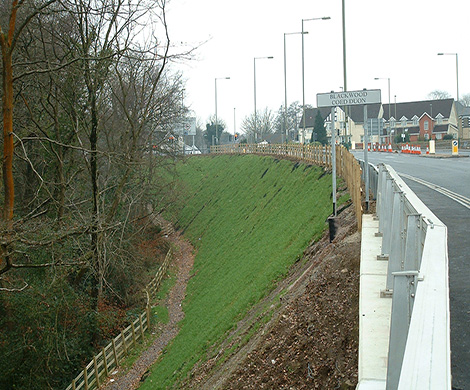When you’re designing a new swimming pool or updating a current one, keeping walls may be among the best options to improving your landscape. Retaining walls are intended to keep pools from draining to the landscape beneath, and they are available in a variety of shapes, sizes, and material to fulfill any need. There are many distinct kinds of pools to consider such as: above ground pools, in-ground lap pools, above ground lap pools, in-ground spa pools, concrete and vinyl pools, concrete and cement block pools, and tropical pools.
Retaining Walls On Steep Slopes

Retaining walls can be constructed to fit the specifications of the property. They may be constructed to lessen the incline of a house, so that when the sun is shining on it, there is no reflection off of the pool causing the water . Many of these kinds of walls are constructed with a stone or tile panel design that enables a neat and seamless look. These panels are intended to be slip resistant and durable, and are constructed with drainage for easy cleaning.
Retaining Walls On Steep Slopes
There are many benefits of installing retaining walls for above ground pool. First, the space that’s created between the wall and the landscaping around the swimming pool will make it possible for you to make many different looks, from formal to informal to tropical. And because many swimming pools are put on steep slopes, retaining walls may keep them from eroding and make a sloped surface that may be utilised as a walking trail or a garden.
Retaining Walls On Steep Slopes
Retaining walls can also supply a security barrier against erosion. Should you build your keeping walls at least six feet higher than the surrounding ground, they will have a greater ability to resist the effects of climate and weather. Gaps between sloping regions can weaken over time and lead to debris to slip them through, especially if there are no railings or other obstacles to block it. The accession of gabions can greatly improve safety, as well as creating an area of safety around the pool.
Retaining Walls On Steep Slopes
There are many distinct styles of Retaining Walls for Above Ground Pools that are readily available. One of the most popular is the brick wall, that has been initially designed as a shield against severe weather. On the other hand, the brick used to build these walls is usually double-lined, which increases its efficacy against erosion and other forces which may damage the walls. This fashion of Retaining Wall was also initially created for use on steep slopes, in which it can keep water away from your base and also help prevent roots from growing beneath the floor. But because the north Willamette receives very little precipitation through winter, the further layer of dirt can greatly help the pool by adding additional warmth to the pool and helping retain the construction.
Among the biggest problems that are often encountered with retaining walls around Above Ground Pools are they become unsightly, especially when they become covered in grass or other forms of plant. Although it is possible to buy concrete slabs which can be found in a variety of colours and layouts, there are a number of ways which it is possible to attempt to disguise a Retaining Wall without changing the appearance that’s originally created. One of the most effective ways to disguise the look of a Retaining Wall would be to be certain that it is situated so that it doesn’t block the view of the rest of the landscape around the region where the Above Ground Pool is situated.
The very first step that you need to take in order to disguise a Retaining Wall on your Above Ground Pool is to ascertain where the retaining wall is going to be placed. In order to determine the best position to your Retaining Wall, then you will need to survey the whole region where your pool will be located. Start looking for places where you might need to cut away some vegetation or tree branches, as well as trenches or other types of access points that might need to get covered up with vegetation. When you are attempting to conceal a Retaining Wall around your Above Ground Pool, it is crucial that you also try to hide any access points or trenching you may find around the area. When you’ve determined the ideal place for your Retaining Wall, then it is necessary that you prepare the soil surrounding the wall so as to prepare it correctly for installation.
As soon as you’ve prepared the soil, you are ready to begin building your custom landscape round the Retaining Walls that you have created. Before you begin to dig your trench, then it is crucial that you produce a plan of how you desire your Above Ground Pool to appear. If you’re going to install your own custom landscape around the Retaining Wall, it’s important that you take under consideration the size and shape of the Retaining Walls as well as the shape and manner of the landscaping around the wall. This can enable you to create the perfect picture of what your outdoor space will look like when it is complete, and will help you decide what materials you’ll have to purchase. Before digging your first hole, it is necessary that you take the opportunity to plan and prepare your landscape around the Retaining Walls so as to ensure your custom-designed pool area will look its very best.


